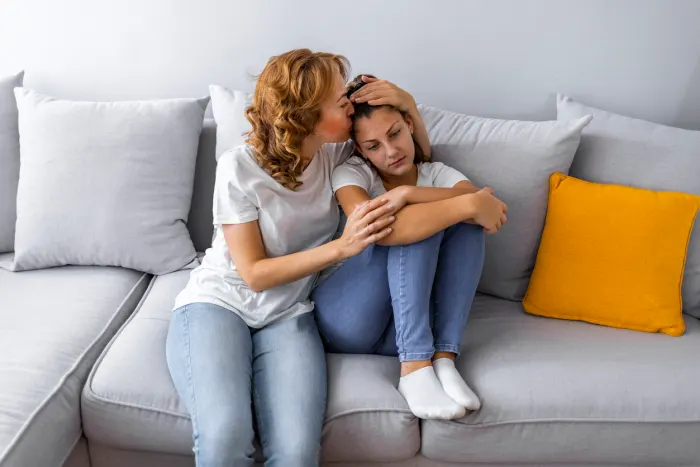
It’s natural to hear about all things back to school as summer comes to an end. Shopping is a popular pastime around this time; after all, going to the store for new school clothes and accessories is thrilling for both kids and parents.
However, if you hear teenagers talking about Back to School Necklace, it’s crucial to understand that they’re not referring to a new, lovely piece of jewellery. Instead, it’s a worrisome word you may hear in a conversation or see on social media. So, basically what is a back to school necklace? We’ll explain.
What is a Back to School Necklace?
A Back to School Necklace is defined on Dictionary as “a different term for a noose This is related to the unbearable pain you experience when school resumes.”
Some Possibilities Are: “I’m about to buy my Back to School Necklace.” “I’m dying to buy a Back to School Necklace,” “Thinking of getting a Back to School Necklace,” “That Back to School Necklace is beckoning,” “I can’t wait to wear my Back to School Necklace,” and so on.
So, while a Back to School Necklace may appear benign to those who are ignorant of its true meaning, it is essentially a call for relief since it is a code for death by hanging.
However, if parents understand this concept, they will be in a better position to assist.
How Should Parents Discuss The Popular “Back to School Necklace” Phrase with their Children?
If you’re not sure how to approach the subject, Samantha Westhouse, LLMSW, a psychotherapist and maternal-infant health social worker, suggests letting your kid lead the discussion. “Begin by saying something like, ‘I heard about this thing called Back to School Necklace—do you know anything about that?'” she suggests. “An open discussion, in my opinion, is always healthy. It’s always vital to avoid passing judgement so your youngster feels comfortable discussing their emotions.”
Making the effort to check in can help a lot. “Parents should feel confident to communicate to their children about mental health in general,” says Emily Cavaleri, LLMSW, a child and family therapist and school social worker. In terms of back-to-school discussions, she adds, “Share personal memories about how you felt when you first started school each year, especially if you experienced dread as a youngster. Inform them that you will assist them in processing their emotions and, if necessary, will refer them to a professional.”
Why is There Such Anxiety Among Students When The School Year Begins?
Some anxiety is understandable as students prepare to return to school after the summer. “Returning to school might be daunting for a lot of reasons,” Cavaleri explains. “Some pupils struggle with the idea of starting a new school, a new instructor, a new timetable, and so on. Students are transitioning from sleeping in and having a comfortable routine to early mornings and hectic days.”
And for many kids, these difficulties seem insurmountable. After all, according to the CDC, “more than one-third of high school students reported continuous feelings of melancholy or hopelessness in 2019, a 40%+ rise from 2009.”
“I think it may be a mix of what socialization has looked like in the previous two years combined with age,” Westhouse adds. “When we look back, 13-year-olds were 10 when we were all in lock-down. [They were] virtually attending school and losing out on regular clubs, athletics, and socializing. Add in horrific school shootings and what has happened in our globe in recent years. Everything has an effect.”
What are some of the warning indicators that parents should be aware of?
“If someone uses this statement, there’s a good probability they’re having trouble with their mental health,” Cavaleri adds. “Whether your child is seriously considering suicide or uses this phrase as a cry for help, signs you may notice include spending time alone, acting withdrawn, irritable, crying easily and frequently, sleeping more than usual, difficulty sleeping, loss of interest in things they used to enjoy, giving away belongings, and overall, a change in behavior.”
Even if you haven’t heard your child say it, Cavaleri points out that it might be a term they use on their phones. “They might utilize it through texting or social media channels,” she explains. “Parents should monitor their children’s electronic usage. Students of any age may be using this term and experiencing similar sensations, so keep an eye out for symptoms in your children, from toddlers to adolescents.”
What should kids be aware of when they use or hear the word “Back to School Necklace” with their friends?
“Students should be aware that saying this word “Back to School Necklace” is extremely dangerous,” Cavaleri advises. “It is not acceptable to make jokes about injuring or dying oneself. If they are actually experiencing these emotions, they should not be ashamed to seek treatment. Even if their buddy advises them not to, kids should alert an adult if they hear or observe their pals using this word.”
Westhouse agrees, stating that even if your child or adolescent dismisses it, they should be aware “that it is serious, even if they believe it is a joke I would recommend you to educate your child and to discuss the issue with school personnel if they observe their peers using the word.”
What resources are advised to assist children and teens who are anxious about returning to school?
Parents can serve as their children’s first line of defense. The CDC suggests that parents “supervise their teenager to support healthy decision-making,” “spend time with their adolescent enjoying shared activities,” and be active with the school by volunteering or talking with teachers and administration on a regular basis.
Westhouse would also urge for schools to have a policy to assist pupils. According to the CDC, prior to the 2019 pandemic, “about 1 in 6 teenagers reported formulating a suicide plan in the previous year, a 44%+ rise since 2009.”
Cavaleri suggests preparing for school early by “being organized, visiting the school/walking [their] schedule if permitted, getting sleep, and eating properly” to make your child feel less stressed about returning to school.
Finally, information is power, and understanding that this is a problem affecting many children and teens allows parents to be more observant and seek more assistance. Both Westhouse and Cavaleri advised obtaining treatment and, if necessary, calling the new 988 suicide helpline.
“I Received My Back to School Necklace”
A Google image search for the keyword “Back to School Necklace” reveals photographs of nooses, as well as memes and social media mentions.
It’s played as a joke, but given Australia’s suicide and self-harm numbers, the joke doesn’t seem that amusing.
Every year, over 65,000 Australians attempt suicide, with 41,000 of them being young people, according to the ABC.
Suicide rates among children under the age of 14 and among young women have risen. It is responsible for one-third of all fatalities among young males, and the suicide rate among young people in 2016 was the highest in a decade.
It’s a harsh image that takes all of the fun out of this “joke.”
Sources:
Emily Cavaleri, LLMSW, is a child and family therapist and a school social worker.
Samantha Westhouse, LLMSW, is a psychotherapist and social worker specializing in maternal-infant health.





